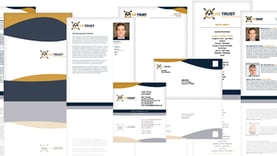There are many cash-value life insurance products for clients who are focused on protecting their loved ones, wealth accumulation and tax-free distributions. The differences between these products can significantly impact the wealth accumulation potential of the policies. Let's examine the various cash-value products available and determine the top life insurance products for this purpose.

Whole Life Insurance
Whole life insurance provides permanent insurance protection that can grow cash value over time and is the only permanent product to guarantee premium, cash value, and death benefit for the life of the policy. It can generate cash value by either participating in the dividends of the issuing company or by an annually stated interest rate of return. Whole life can work effectively as an individual strategy or as an "and" strategy with other products. In the last 10 years new policy designs have added additional flexibility while focusing on specific segments of the market. Today, in addition to death benefit protection, whole life products fill one of three strategies; accumulation, protection or single premium and traditionally has been one of the largest life insurance segments representing 35% of the market.
Universal Life
In the 1980s, Universal Life (UL) was introduced to the market as an unbundled, fixed crediting rate life product. All of the product’s costs, fees, and loads were disclosed separately — a significant departure from Whole Life. Back in the early 1980s, the Federal Funds rate was at an all-time high, up to 20%. Those high interest rates were attractive to clients looking to build cash values within a UL policy. However as rates dropped, we are now at the other end of the Federal Funds rate spectrum of all-time lows.
For clients looking for premium flexibility, UL offers an affordable way to provide pure insurance protection. However, the ongoing low interest rates make these safe products unattractive to consumers looking to generate significant cash values.
Variable Universal Life
In the mid-1990s, carriers began introducing Variable Universal Life (VUL). The product appealed to many in the middle of the bull market experience, by tying the insurance policy’s performance to the raw market. Looking back, the bull market resulted in extraordinarily high illustrated rates, which were unsustainable over a longer term.
The markets continually change and bull markets end. With a VUL, clients will experience flat and down markets. The problem is that in a down market, VUL credits “negative interest”. Negative interest may ultimately implode the product or require substantial premium payments to keep the policy going. This negative interest makes it very difficult for these products to compete over the long term.
At one time, VUL was “the” product everyone desired if they wanted to generate significant cash values, but today many people have come to realize that having so much risk in an insurance policy just isn’t worth the potential benefits.
Indexed Universal Life
Indexed Universal Life (IUL) is designed to allow clients to avoid market corrections while earning interest on the annual reset. This leads to significantly less market volatility than a VUL. When the worst you can do is earn 0% in any given year, that floor helps reduce the volatility, and over a long-term the product can keep pace or even beat the best VUL out there. The growth caps in an IUL policy provide significant build up of cash values. There really isn’t any economic condition where IUL doesn’t outshine its competitors.
What’s a Cap Really Worth?
One of the main attractions to an IUL product is the ability to track policy performance against an external market index without the risk of losing money in the market. One of the most misunderstood factors is how much difference there is between policy values from products with different cap rates. Insurance companies set and modify cap rates based on a multitude of factors and internal calculations. So while each company may set their cap at a different level, the ability for the product to perform relative to the market may be hindered by the cap.
While past performance is no guarantee of future results, it helps us better understand how some caps within a product would have performed over the long-run. Taking a historical look back from 1950 through today, and assuming an annual point-to-point crediting method on the S&P 500 index, on average a product with a 13% cap or higher would have outperformed the overall market.
Many IUL products out there today are able to support growth caps around 12.5%. If a carrier can support caps at 12.5% today, if long-term interest rates increase, it should lead to higher IUL caps down the road. Every 1 percent increase in long-term expected cap rates generally leads to an additional 40 to 50 basis points in additional expected crediting rate. So, products with a higher cap could be able to generate stronger long-term returns.
Get access to an IUL prospecting video you can use either to email to prospects or post to social media to drive interest in a better way to supplement their retirement savings.






